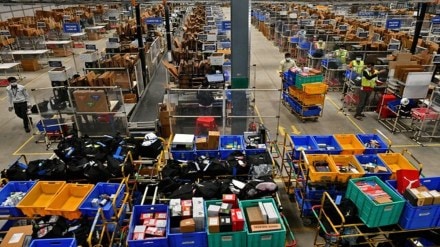By Nirupama Soundararajan and Arindam Goswami
India’s retail sector is a $850-billion industry. It consists of various formats, including traditional retail stores, organised retail, e-commerce, and direct selling. Arguably, e-commerce is the fastest growing of these formats, at almost 25-30%, while organised retail is expected to grow at 15-20%, and direct selling at 10-15%. The overall retail sector is expected to grow at the rate of 12% per annum. Currently, the direct selling sector constitutes a mere 1% of total retail, while organised retail stands at 12%, and e-commerce estimates vary from 4-7%. This means, even now, nearly 80% of India’s retail market comprises traditional stores and other formats such as network and catalogue marketing stores.
The commerce minister recently criticised foreign e-commerce players, particularly Amazon, for alleged predatory pricing, violations of foreign direct investment rules, and their contribution to the Indian economy — and followed it with a swift softening of his stance. This, combined with the recent leaked findings of the Competition Commission of India’s (CCI) anti-trust investigations, expose the deep morass in our policymakers’ approach to e-commerce and retail policies and processes.
Concerns over predatory pricing and unfair competition were prevalent even when organised retail entered India in the early 2000s. Today, we see traditional retail formats thriving alongside organised ones. E-commerce has done the same for many businesses in recent years. Indian businesses are not restricted only to those in the traditional retail formats. Numerous micro, small, and medium enterprises have also used e-commerce platforms, foreign and domestic, to expand their market reach and become more digitally savvy as well as more organised with their books and business practices.
India’s foreign trade policy, for the first time, has set very specific targets for exports through e-commerce. In fact, the chief minister of Uttar Pradesh has been proactive in signing multiple MoUs, some as recent as September (with Amazon), to help facilitate exports through e-commerce from the state. The One District One Product initiative, which began in Uttar Pradesh and has now been implemented pan-India, will require the support of e-commerce platforms to enable even the smallest of businesses to export to foreign markets. In fact, in this situation foreign e-commerce platforms that have extensive global presence can add immense value. These global markets present significant demand for products like Indian handicrafts, ethnic wear, spices, jewellery, and organic food products.
While the advantages to the average consumer cannot be overstated, what is often not discussed is how e-commerce has helped transform rural consumption. Invest India states that e-commerce adoption and delivery has expanded to almost 100% of all pin codes in India. Furthermore, it notes that close to 60% of e-commerce transactions originate from tier-II and III cities and smaller towns, including rural India. Shoppers from these towns, encouraged by the availability of many brands and products, constitute nearly 50% of all shoppers. The availability of online platforms has empowered rural consumers with access to a wider range of products, often at competitive prices. The success of e-commerce in these markets has also encouraged the growth of a new breed of entrepreneurs in rural areas, allowing them to sell their products to a broader audience.
The Indian e-commerce landscape is booming. From bustling metros to remote villages, online shopping has become an integral part of the Indian consumer experience, and policymakers are cognizant of this. Yet when it comes to policymaking for the e-commerce sector, there seems to be significant biases. There are many Indian consumer brands that have successful and big e-commerce businesses. They are not just capable of competing with foreign brands but are doing so successfully. Hence, creating policies that lead to an inherent arbitrage between e-commerce platforms based on origin of capital seems unnecessary and is unfair. While concerns over predatory pricing and unfair competition are justified, we must not forget that unfair trade practices can be adopted by any large brand, irrespective of format or origin of capital, or even sector. Yet, the conversations seem to revolve only around foreign-owned platforms. We must also not forget that the CCI has evolved over the years and has grown into an extremely capable watchdog that can track unfair trade practices and take any company indulging in such practices to task.
What India needs to do deal with the morass in policymaking around the retail sector is develop a unified retail policy instead of piecemeal policies around e-commerce, organised retail, food retail, and direct selling. A consumer wants competitive pricing, selection of brands and products, convenience, good grievance redress, and an enjoyable shopping experience. When consumers do not differentiate between retail formats, as long as their needs are met, why should any retail policy? A unified retail policy can protect consumer interests and ensure fair business practices for all formats of retail irrespective of format and origin of capital. This would be an ideal approach.
The authors are respectively co-founder and CEO, and co-founder and partner, Policy Consensus Centre.
Disclaimer: Views expressed are personal and do not reflect the official position or policy of FinancialExpress.com. Reproducing this content without permission is prohibited.
